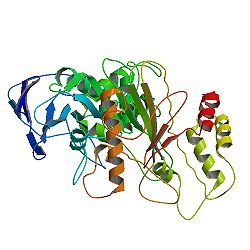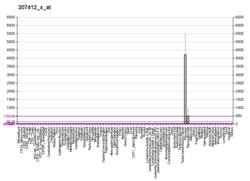Mammalian protein found in Homo sapiens
| CEL |
|---|
 |
|
| Identifiers |
|---|
| Aliases | CEL, BAL, BSDL, BSSL, CELL, CEase, FAP, FAPP, LIPA, MODY8, Bile salt-dependent lipase, carboxyl ester lipase |
|---|
| External IDs | OMIM: 114840; MGI: 88374; HomoloGene: 37529; GeneCards: CEL; OMA:CEL - orthologs |
|---|
|
|
|
|
|
| Wikidata |
|
Bile salt-dependent lipase (or BSDL), also known as carboxyl ester lipase (or CEL) is an enzyme produced by the adult pancreas and aids in the digestion of fats. Bile salt-stimulated lipase (or BSSL) is an equivalent enzyme found within breast milk. BSDL has been found in the pancreatic secretions of all species in which it has been looked for. BSSL, originally discovered in the milk of humans and various other primates, has since been found in the milk of many animals including dogs, cats, rats, and rabbits.[5]






